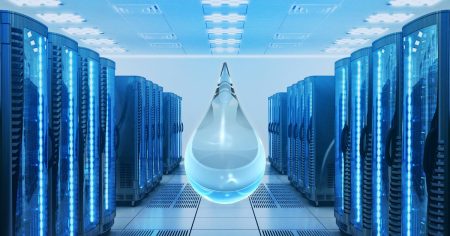Direct Liquid Cooling Technology
Kontaktieren Sie uns noch heute für die perfekte Lösung zur Temperaturkontrolle
Classification of direct liquid cooling technologies
1. Spray cooling technology
Spray cooling technology has the advantages of fast temperature control response and strong heat dissipation capacity. From the current application, it can be found that the heat transfer coefficient range of this technology is higher. The current cooling process of this technology includes: after preparing the liquid, it enters the nozzle through the channel. Under the division of the nozzle, it can be quickly atomized and broken down into countless tiny droplets. After that, the droplets can be evenly distributed on the heating surface after being sprayed through the nozzle. During this process, the physical effects such as the impact and evaporation of the droplets can take away the heat from the heating surface. The more common spray cooling technology at this stage generally uses tilted gas auxiliary nozzles. During operation, a varying number of nozzles can be properly laid out according to the area of the server area. This technology has now been applied to the cooling of supercomputers and also has broad application prospects in data centers.

2.Spray cooling technology
This technology can create a temperature boundary layer that can not only isolate the heated surface from the environment, but also continuously absorb the heat radiated from the surface; and because the water flow in this boundary layer is fast, it can quickly take away the heat. From the perspective of technical principles, spray cooling technology is similar to spray cooling technology, but during the application process, relevant personnel also need to focus on the requirements for sealed steam chambers and two-phase coolant flow.
3.Single-phase immersion cooling technology
The key point of this technology is that the server can be placed directly in the cooling liquid for cooling, and the cooling liquid can be used to directly absorb heat, which has the advantage of good temperature control effect. Therefore, when applying this cooling method, the impact of impurities on the cooling effect should be considered. The impurities must be dealt with before they can be used in the cooling process of the device. During the construction of the terminal system of this technology, devices such as dry cooling towers or water cooling towers are usually added. The above devices can achieve natural cooling of warm water and quickly dissipate the heat generated by the data center into the air, so it has an ideal heat dissipation effect. . At the same time, this technology also supports the requirements for heat processing and recycling. For example, by setting up a waste heat recovery system, the heat in the cooling warm water can be recovered. Judging from the current status of technology application, common coolants for this technology include white oil, synthetic medium coolants, etc., and relevant personnel can choose open cooling systems and closed cooling systems according to temperature control requirements. According to research by relevant scholars, in single-phase immersion cooling technology, by completely immersing the server in the coolant, relevant personnel can improve the installation density of the server and the cooling capacity of the system according to specific requirements, which has great technical advantages. Strong applicability. At the same time, from the perspective of cost management, because this system does not require the installation of chillers, raised floors and other devices, it helps to further control the total cost. Judging from application experience, after a supercomputer adopted a single-phase immersion cooling system, it saved approximately 50% of the total energy cost during the temperature control process. Therefore, the system is expected to fully recover the single-phase immersion cooling system within 3 years of operation. The investment cost of liquid cooling technology; at the same time, after the liquid cooling technology was put into use, the highest PUE value of the data center was 1.08, and all indicators met the technical requirements.
4. Two-phase immersion cooling technology
Another common way of immersion cooling technology is to use two-phase immersion cooling technology. This technology mainly uses a series of physical phenomena that occur when the boiling point of immersion cooling is low to achieve temperature control purposes. For example, the boiling process after the boiling phase change will pass through Latent heat absorbs heat, quickly reducing the temperature of the data center. In this technology, the liquid will quickly absorb heat and eventually boil as the temperature increases, so this technology involves a series of physical change processes such as gravity drive and latent heat transfer. From the perspective of technical application, the significant advantage of this technology is that there is no need to install cooling service piping systems, connectors and other devices, so the maintenance of the entire system is easy and facilitates later operation and maintenance. At the same time, because the system does not require a dedicated chip-level cooling pump, the stability of the entire system will be significantly improved. At the same time, the final cooling effect of the two-phase immersion cooling technology is related to the roughness of the heat source surface, various performance parameters of the coolant and other factors. For example, the surface structure of commonly used heat sources is complex, including porous structure, particle structure, nanoparticle structure, fin structure, etc. Chip array structure, etc., when using two-phase immersion cooling technology, the low-boiling point fluorinated liquid used in this technology can boil at a lower temperature to promote heat removal. The application results show that after adopting two-phase immersion cooling technology, the PUE of the data center is about 1.05, and the energy saving results are more ideal.
E-Mail: info@lneya.com WeChat ID: +8615251628237 WhatsApp: +86 17851209193
 LNEYA
LNEYA
 简体中文
简体中文


















































































